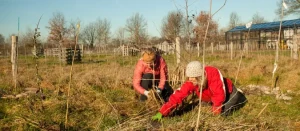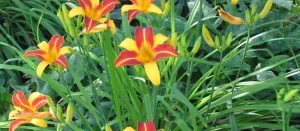SEARCH RESULTS > ARTICLES > Climate
As gardeners, we are stewards of the land, nurturing and coaxing life from soil, sun, and water. In our pursuit of abundant harvests and flourishing landscapes, we often seek methods that not only yield bountiful crops but also sustain the delicate balance of our ecosystems. One such approach that has gained significant attention and acclaim is agroecology. Learn More
In the face of escalating climate change and environmental degradation, the urgency to adopt sustainable practices has never been more critical. Permaculture, a design system rooted in principles of sustainability, offers a promising pathway towards mitigating the adverse effects of climate change (people and companies destroying nature) and restoring ecological balance. Learn More
Gardening is not júst a hobby; it's a way of fostering harmony between humans and nature. In the pursuit of sustainable cultivation practices, permaculture and agroforestry stand out as beacons of ecological integrity and productivity. By integrating these two methodologies, gardeners can create vibrant, resilient ecosystems that yield abundant harvests while enhancing biodiversity and soil health. Learn More
The no-dig method, also known as no-till gardening, is a sustainable and organic approach to cultivating vegetables without disturbing the soil structure. This gardening technique has gained popularity among gardeners due to its numerous benefits for soil health, plant growth, and overall garden productivity. Unlike traditional gardening methods that involve tilling, digging, and turning the soil, the no-dig method emphasizes minimal soil disturbance. Instead of breaking up the soil, gardeners layer organic materials on top of the ground to create nutrient-rich soil beds where plants can thrive. By implementing the no-dig method, gardeners can improve soil structure, enhance soil fertility, and promote beneficial soil organisms such as earthworms and microorganisms. Additionally, this approach helps to conserve water, reduce weed growth, and minimize soil erosion. Learn More
Starting seeds indoors is a rewarding way to kickstart your spring garden. By sowing seeds indoors, you gain greater control over the germination process, extend your growing season, and ensure stronger, healthier plants when it's time to transplant them outdoors. Whether you're a seasoned gardener or just starting out, this comprehensive guide will walk you through the steps to successfully start seeds indoors and set the stage for a bountiful garden. Learn More
Welcome, fellow gardeners, to the world of edible flowers! In this article, we will explore the delightful realm of incorporating edible blooms into your garden, not only for their visual appeal but also for the culinary wonders they offer. Learn More
Cover crops are an essential aspect of sustainable gardening. These crops, also known as green manure, are planted primarily to improve soil health, enhance fertility, control weeds, and prevent erosion. Learn More
Spring brings forth a burst of color and life, and one of the best ways to enhance your garden's beauty during this season is by planting spring-blooming bulbs. These bulbs have the magical ability to transform your outdoor space into a colorful paradise, offering a delightful array of flowers that herald the arrival of spring. In this guide, we will explore the art of selecting and planting spring-blooming bulbs, providing you with valuable insights and tips to ensure a bountiful and vibrant display in your garden. Learn More







